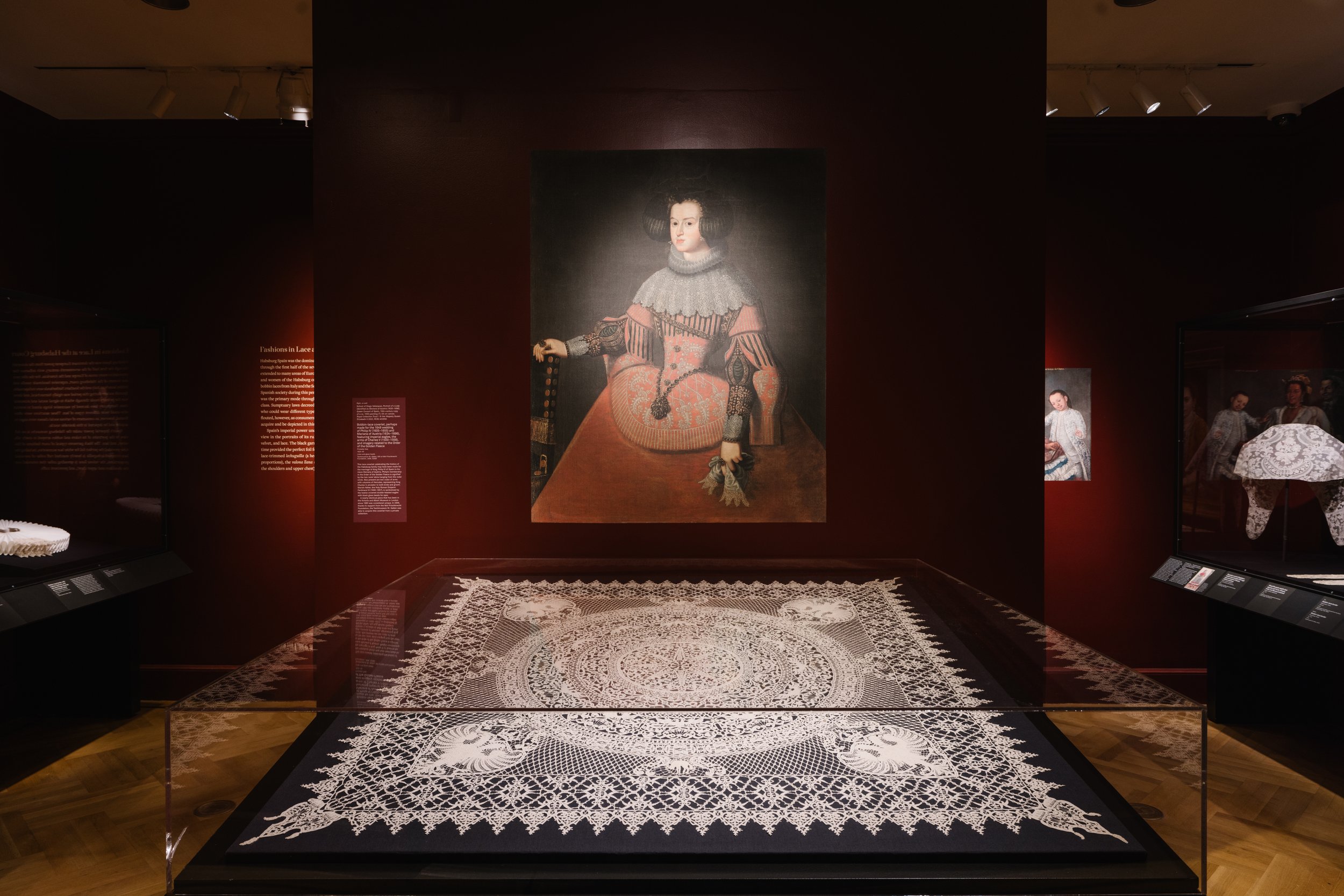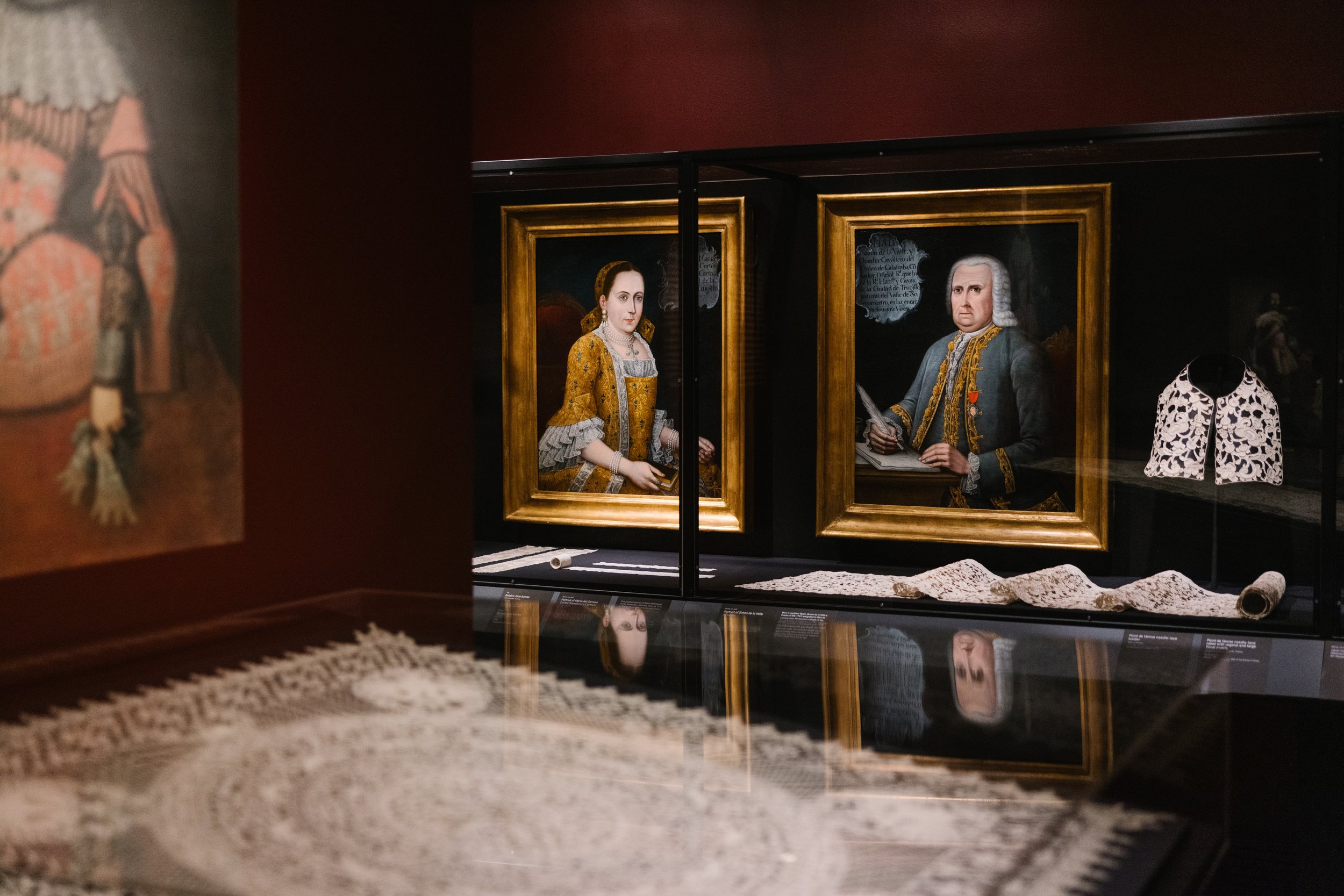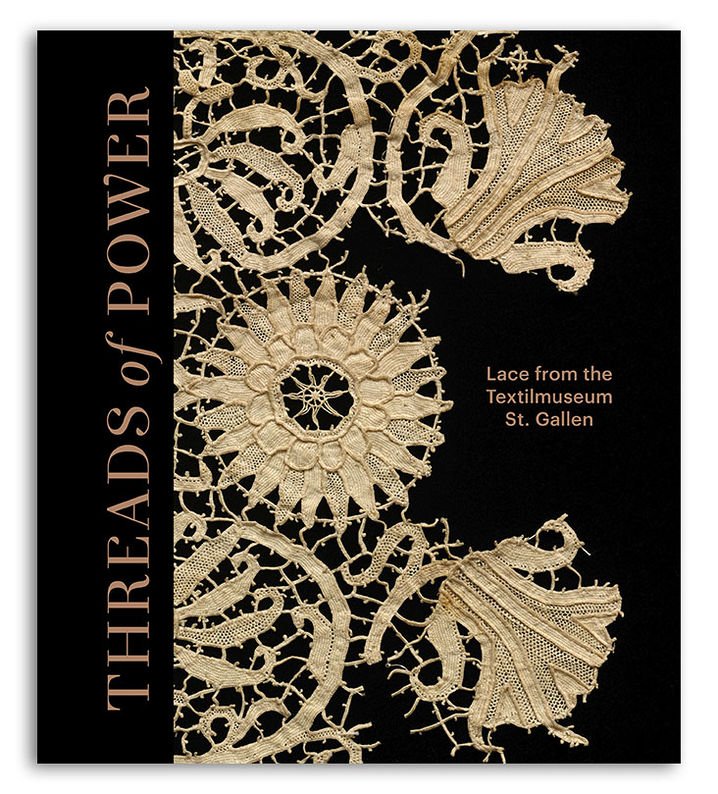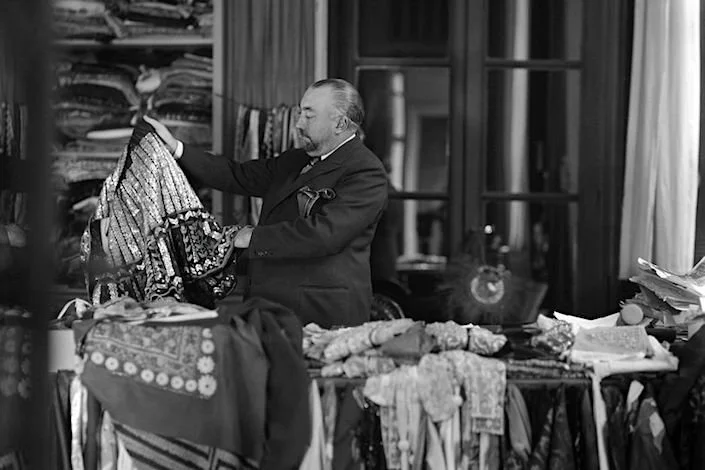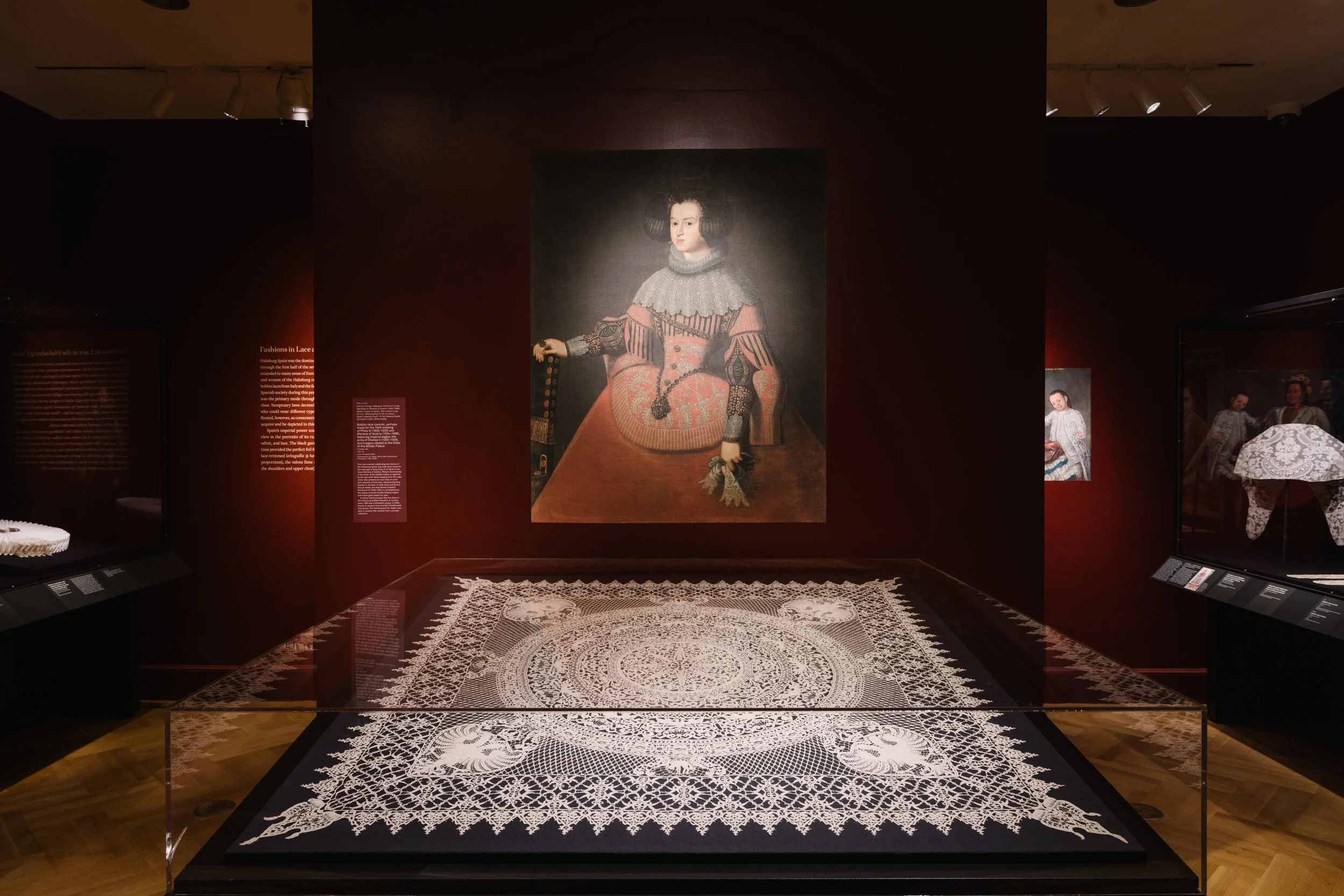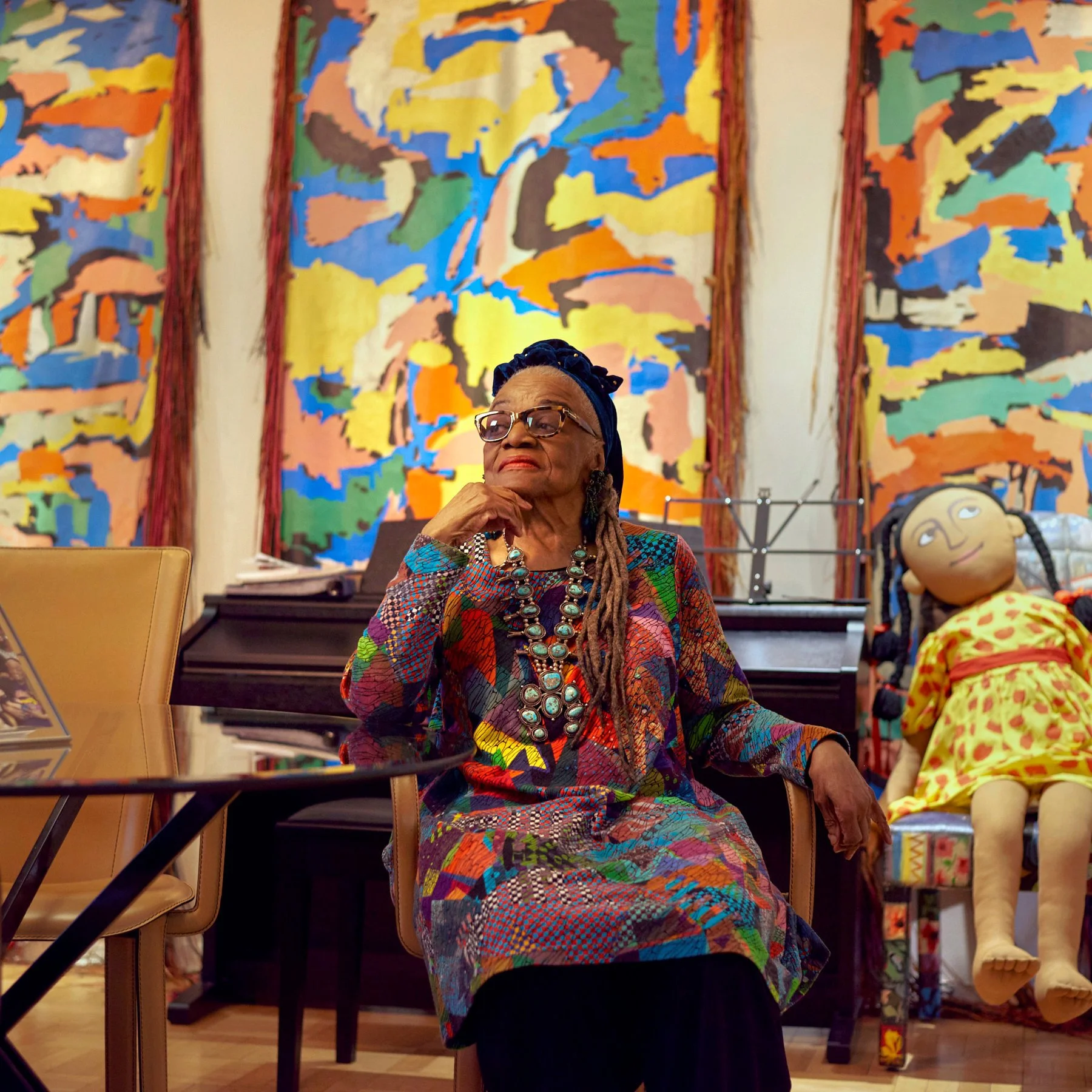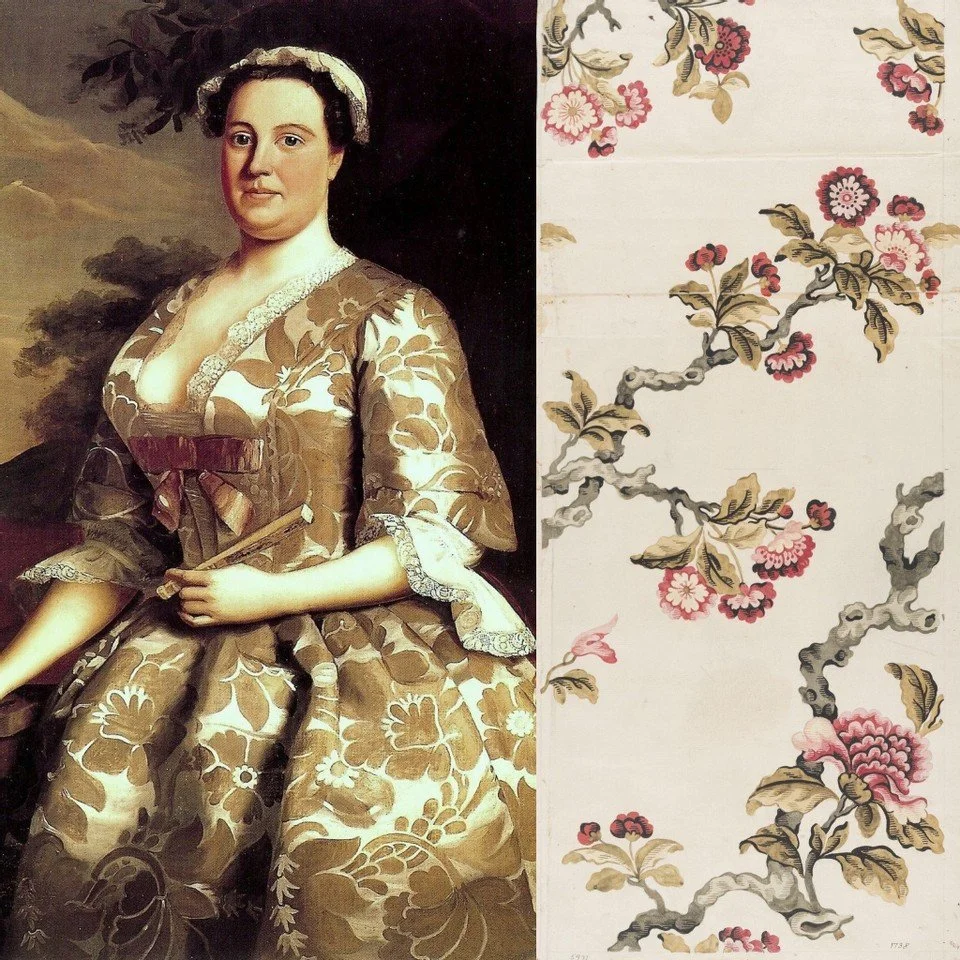Lace: A Timeless Beauty and Symbol of Power
Discover the hidden history of lace from the fascinating Threads of Power: Lace from the Textilmuseum St. Gallen exhibition at the Bard Graduate Center, brought to life through exclusive interviews with curators Emma Cormack, Michele Maher and modern lace artist Elena Kanagy-Loux.
Adapted from Report 15: Passementerie and Hospitality
The first major installation in New York on lace in more than 40 years: Threads of Power: Lace from the Textilmuseum St. Gallen exhibit at the Bard Graduate Center (September 16, 2022 – January 1, 2023) captured the attention of textile enthusiasts everywhere, including a fresh crop of lace-lovers whose affinity originated during the pandemic lock-downs. Exhibition curators Emma Cormack and Michele Majer answered all of our burning questions about lace, while contemporary lace artist and founder of the Brooklyn Lace Guild, Elena Kanagy-Loux, offered her personal take.
The sweeping exhibition and accompanying catalogue explore the overarching theme of lace as a luxury commodity from its early roots in the 16th century to its present-day relevance: surveying the complexities of history, including gender inequality, colonialism, capitalism, wealth disparity, and exploitative labor, through the lens of lace. A spotlight shines on the stories of the mostly unnamed women who made lace, once the most expensive textile in the world. Elena Kanagy-Loux’s red lace collar opened the exhibition to subvert this historic veiling.
Bobbin-lace coverlet, perhaps made for the 1649 wedding of Philip IV (1605–1655) and Maria Anna of Austria (1634–1696), 1625–50. Linen, glass beads. Textilmuseum St. Gallen, Gift of Iklé-Frischknecht Foundation, 2006, 52093. Photograph: Michael Rast.
Installation view of ‘Threads of Power: Lace from the Textilmuseum St. Gallen’. Photo: Da Ping Luo/Bard Graduate Center
“Lace is the past, but it’s also the future.”
Elena Kanagy-Loux
Defining Lace
The curators chose a wide view of the definition for the exhibition and the accompanying book: lace is an open work textile, where the spaces between the threads are what defines the design. This includes cutwork, knotwork and even chemical lace. (If you are interested in deepening your understanding of lace and its various types and styles, the lace glossary by Kenna Libes is available to our free members and paid subscribers.) Lace is a delicate and intricate fabric that has been a symbol of elegance and power for centuries. From royal weddings to high-society events, lace has been a staple in the world of fashion and continues to be a popular choice for special occasions- including former First Lady Michelle Obama’s dress for the 2009 presidential inauguration. But it continues to be re-invented.
The history of lace dates back to the 16th century and has a rich history spanning continents and cultures. A wide range of lace artifacts, including paintings and delicate examples from the 16th and 17th centuries as well as more modern pieces from the 19th and 20th centuries were on display. The pieces on display illustrate the skill and artistry that goes into the creation of lace and its evolution over time.
Important Stories to Tell
As Elena so beautifully puts it, "Lace is not only aesthetically pleasing, it is a lens to examine all of the complexities of history, both the beautiful and the ugly: gender inequality, the global expansion of colonialism and capitalism, wealth disparity, exploitative labor, and also incredible skill and creativity." Through the twists and turns of the threads, we can uncover the stories of the women who made what was once one of the world's most expensive textiles. As Elena notes, "The names of the (mostly) women who made what was once arguably the most expensive textile in the world were rarely recorded, but we can uncover their stories in the twists of their threads, if only we know where to look."
With a subscription to The Textile Eye you can access Report 15, including our special interview with curators Michele Majer, Emma Cormack, and Elena Kanagy-Loux. You'll not only get a closer look at the history and modern relevance of lace, but also see how contemporary interior fabric companies are using lace and lace looks in new introductions from luxury fabric companies around the world.
Learn & Get Inspired
Subscribe to access the full article and the rest of Report 15
Threads of Power Catalogue
The Threads of Power: Lace from the Textilmuseum St. Gallen catalogue, curated by the Bard Graduate Center, provides a detailed look into the history and cultural significance of lace, highlighting its impact on society and its enduring appeal. Whether you are a lover of lace or simply interested in learning more about the history of fashion and textiles, this book will be a beautiful addition to your collection.

